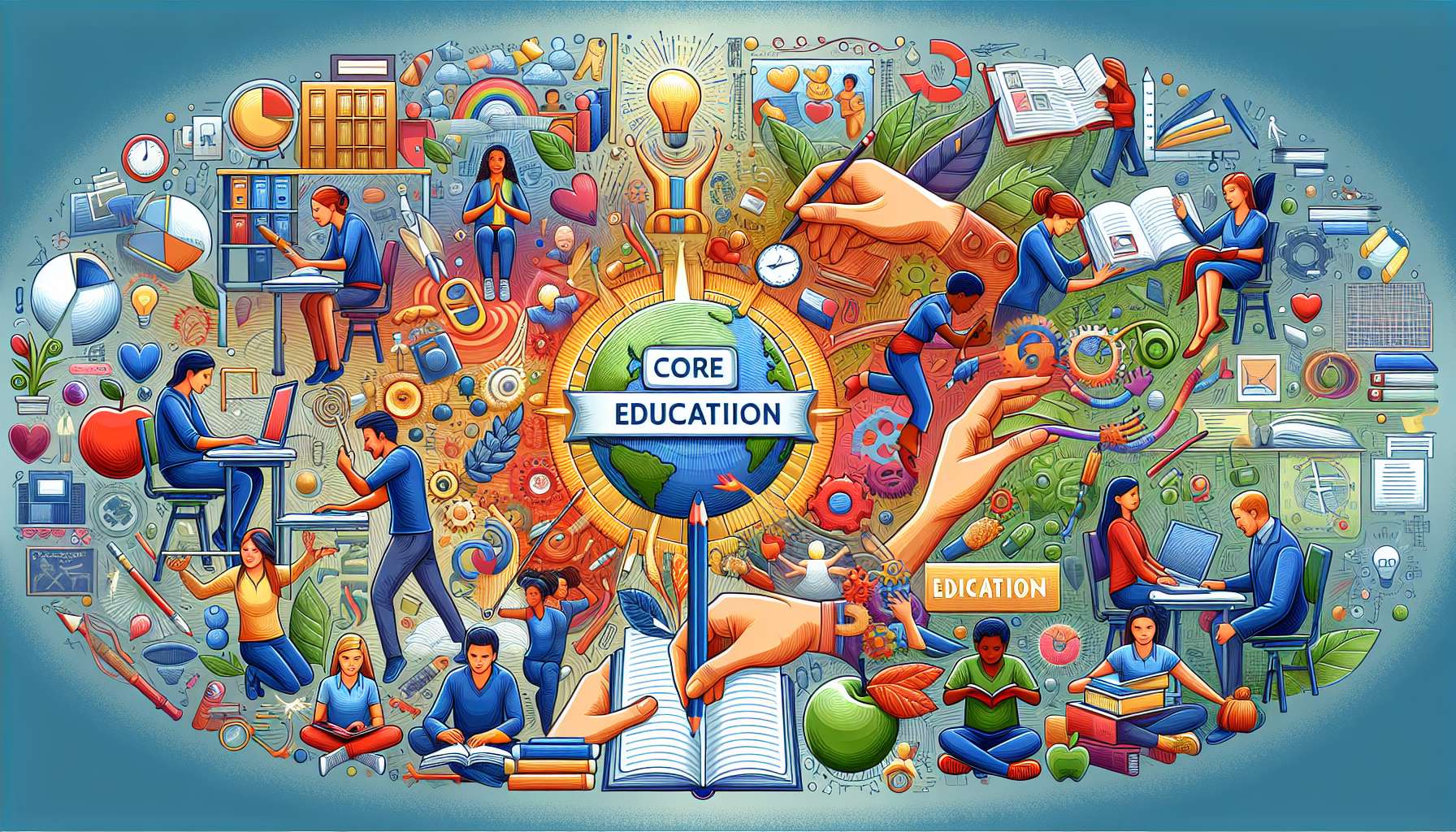Essential Learning Pathways: Navigating the Future of Education
Education is the cornerstone of society, shaping the minds and futures of individuals and communities. In today’s rapidly evolving world, the traditional approach to learning is being reimagined and reshaped by innovative concepts such as Essential Learning Pathways. But what exactly are Essential Learning Pathways, and how do they impact the way we learn and grow? Let’s delve into this transformative educational framework and explore its implications for the future.
The Evolution of Education
Before we dive into the specifics of Essential Learning Pathways, it’s essential to understand the historical context of education. Traditional education systems have been rooted in standardized curricula, assessments, and classroom-based learning. However, as the world becomes increasingly interconnected and complex, there is a growing recognition that students need more than just academic knowledge to thrive in the 21st century.
Essential Learning Pathways represent a shift towards a more personalized and holistic approach to education. Instead of focusing solely on academic content, these pathways emphasize the development of essential skills such as critical thinking, communication, collaboration, and creativity. By equipping students with these foundational skills, Essential Learning Pathways aim to prepare them for success in a rapidly changing world.
The Core Principles of Essential Learning Pathways
At the heart of Essential Learning Pathways are a set of core principles that guide the design and implementation of this educational framework. These principles include:
- Personalization: Each student’s learning pathway is unique, tailored to their individual strengths, interests, and goals.
- Relevance: Learning experiences are connected to real-world contexts, making education more meaningful and engaging for students.
- Flexibility: Students have the flexibility to explore diverse learning opportunities and pursue their passions.
- Integration: Essential skills are integrated across disciplines, encouraging a holistic approach to learning.
By adhering to these principles, Essential Learning Pathways seek to create a dynamic and student-centered educational environment that fosters creativity, curiosity, and lifelong learning.
Implementing Essential Learning Pathways in Practice
While the concept of Essential Learning Pathways is compelling, the challenge lies in translating these principles into actionable strategies and practices. Schools and educators are exploring various approaches to implementing Essential Learning Pathways, including:
- Project-Based Learning: Students engage in hands-on projects that require them to apply essential skills to real-world problems.
- Experiential Learning: Learning experiences extend beyond the classroom, allowing students to gain practical skills through internships, community service, and other opportunities.
- Competency-Based Education: Students progress based on mastery of essential skills rather than traditional grade levels, allowing for more personalized and flexible learning pathways.
By adopting these innovative approaches, schools can create a more dynamic and engaging learning environment that prepares students for success in the 21st century.
The Impact of Essential Learning Pathways on Student Success
Research has shown that Essential Learning Pathways have a profound impact on student success and well-being. By focusing on the development of essential skills, students are better equipped to navigate complex challenges, communicate effectively, collaborate with others, and think critically. These skills are not only essential for academic success but also for personal and professional growth in an increasingly interconnected world.
Furthermore, Essential Learning Pathways promote a growth mindset, resilience, and adaptability in students, empowering them to face uncertainty and change with confidence. By cultivating these essential skills, schools can prepare students to thrive in a rapidly evolving society and economy.
Expert Opinions on Essential Learning Pathways
Experts in the field of education have weighed in on the benefits of Essential Learning Pathways. Dr. Linda Darling-Hammond, an education researcher and professor, emphasizes the importance of integrating essential skills into the curriculum to prepare students for success in the 21st century.
“Essential Learning Pathways offer a transformative approach to education that empowers students to become lifelong learners and critical thinkers. By focusing on essential skills, educators can cultivate a generation of adaptable and resilient individuals who are ready to meet the challenges of the future.”
Dr. Yong Zhao, a renowned education scholar, highlights the need for a more personalized and student-centered approach to learning, stating:
“Essential Learning Pathways provide students with the autonomy and flexibility to pursue their passions and interests, fostering a love for learning and a sense of purpose. By empowering students to take ownership of their education, schools can cultivate a culture of creativity and innovation.”
Common Misconceptions about Essential Learning Pathways
Despite the numerous benefits of Essential Learning Pathways, there are some common misconceptions that can hinder their adoption and implementation. One of the most prevalent misconceptions is that Essential Learning Pathways are only suitable for certain students or schools. In reality, Essential Learning Pathways can be adapted to meet the needs of diverse learners and educational contexts.
Another misconception is that Essential Learning Pathways prioritize soft skills over academic knowledge. While essential skills are a key focus of this educational framework, they are not meant to replace academic content. Instead, essential skills complement traditional subject areas, providing students with a well-rounded and holistic education.
Comparative Analysis: Essential Learning Pathways vs. Traditional Education
It’s important to consider how Essential Learning Pathways compare to traditional education models to understand their unique advantages and challenges. While traditional education emphasizes standardized curricula and assessments, Essential Learning Pathways offer a more personalized and flexible approach to learning. By focusing on essential skills and real-world applications, Essential Learning Pathways provide students with a more relevant and engaging educational experience.
One of the key differences between Essential Learning Pathways and traditional education is the emphasis on student agency and autonomy. Essential Learning Pathways empower students to take ownership of their learning and pursue their interests, fostering creativity, curiosity, and self-motivation. In contrast, traditional education often relies on teacher-directed instruction and standardized assessments, limiting students’ opportunities for exploration and discovery.
Conclusion: Navigating the Future of Education with Essential Learning Pathways
As we look to the future of education, Essential Learning Pathways offer a promising framework for creating a more dynamic, student-centered, and relevant learning experience. By prioritizing essential skills, personalized learning pathways, and real-world applications, Essential Learning Pathways prepare students for success in a rapidly changing world.
It’s clear that the traditional approach to education is no longer sufficient to meet the demands of the 21st century. Essential Learning Pathways provide a pathway for schools and educators to reimagine learning and empower students to thrive in a complex and interconnected world.
To wrap things up, Essential Learning Pathways represent a transformative shift in education that holds the potential to shape the future of learning and empower students to reach their full potential. By embracing this innovative framework, we can pave the way for a more dynamic, engaging, and impactful educational experience for generations to come.




